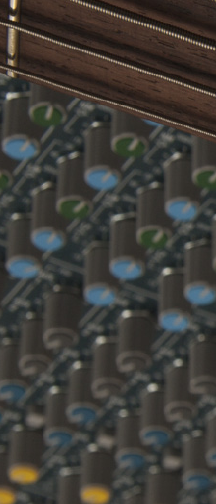
The truss rod is the ingenious unseen device
inside the neck that counteracts the bending force
caused by string tension. An ideally adjusted
neck will have a moderate amount of relief
(curvature) in it to accommodate the vibrating
strings. The factory specification for neck relief
on Fender
®
bass guitars is between .012” and
.014”, measured between the bottom of the
string and the top of the fret, at the 7th fret.
To adjust the truss rod, fasten a capo to the first
fret. If you are adjusting a four-string bass, fret
the “E” string at the last fret; if you are adjusting
a five- or six-string bass, fret the “B” string at the
last fret). Then measure from the bottom of the
string to the top of the 7th fret using the feeler
gauge—the gap should be between .012” and
.014”. When you view the neck by sighting down
it from the body end toward the headstock, you
can see whether the neck is straight or bowed.
If the truss rod needs adjustment, detune
the strings first to relieve neck tension, and
remember to retune to pitch before measuring
again. To adjust the truss rod, use either a large
Phillips or flathead screwdriver (for most vintage
style basses), or the hex wrench supplied
with your bass (for modern basses). Note that
for vintage-style basses with the truss rod
adjustment at the neck heel, you must remove
the strings and loosen the neck mounting
screws and/or remove the pickguard to gain
access to the truss rod adjustment nut. If the
neck curvature is too concave, turn the truss rod
adjustment nut clockwise. If the neck curvature
is too convex, turn the truss rod adjustment
nut counterclockwise. Check your tuning; then
check the gap again with the feeler gauge.
If you meet excessive truss rod resistance or if
you’re not comfortable adjusting it yourself, you
can always take your guitar to your Authorized
Fender Service Center.
3. TRUSS ROD ADJUSTMENTS
22


















